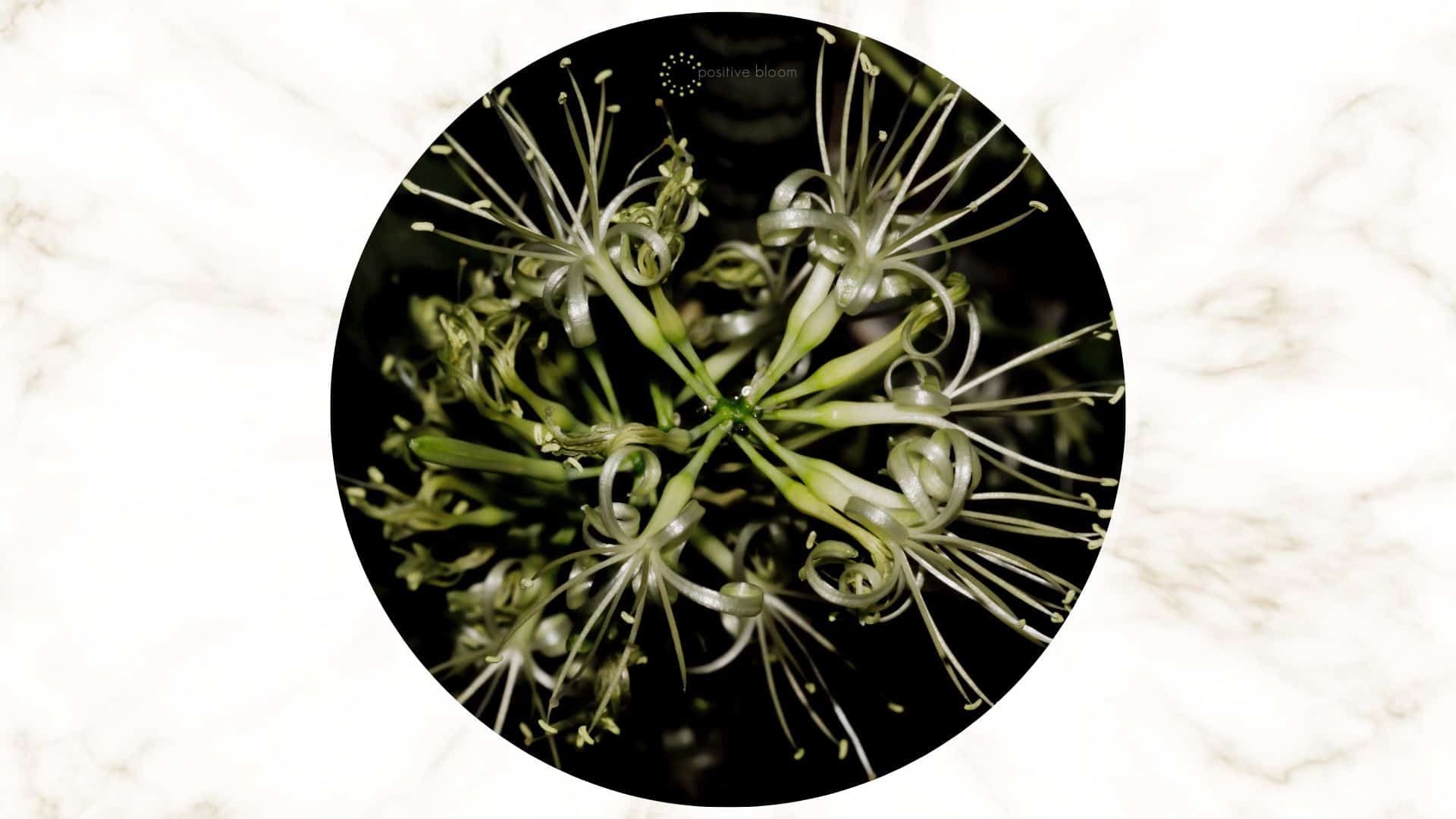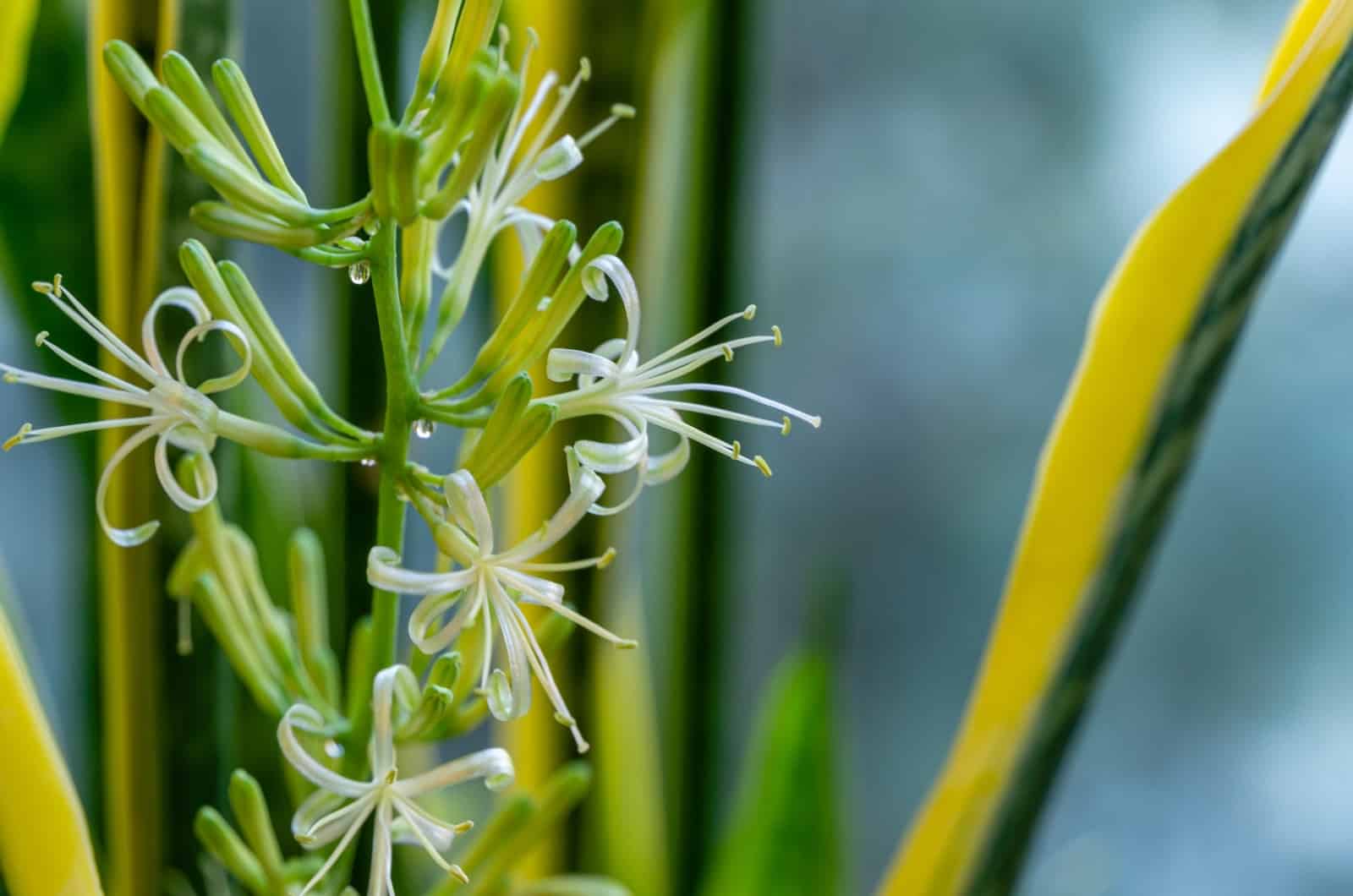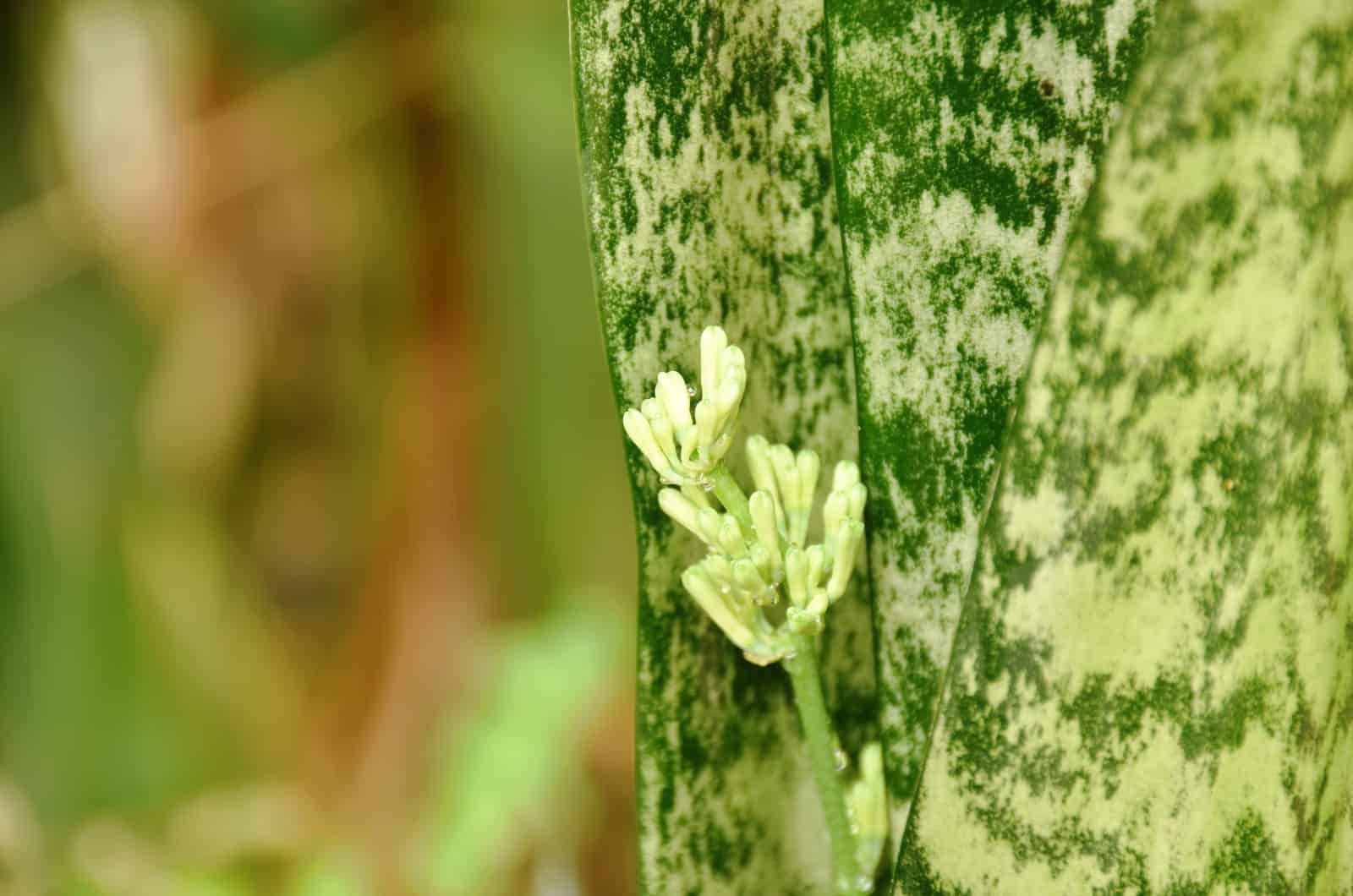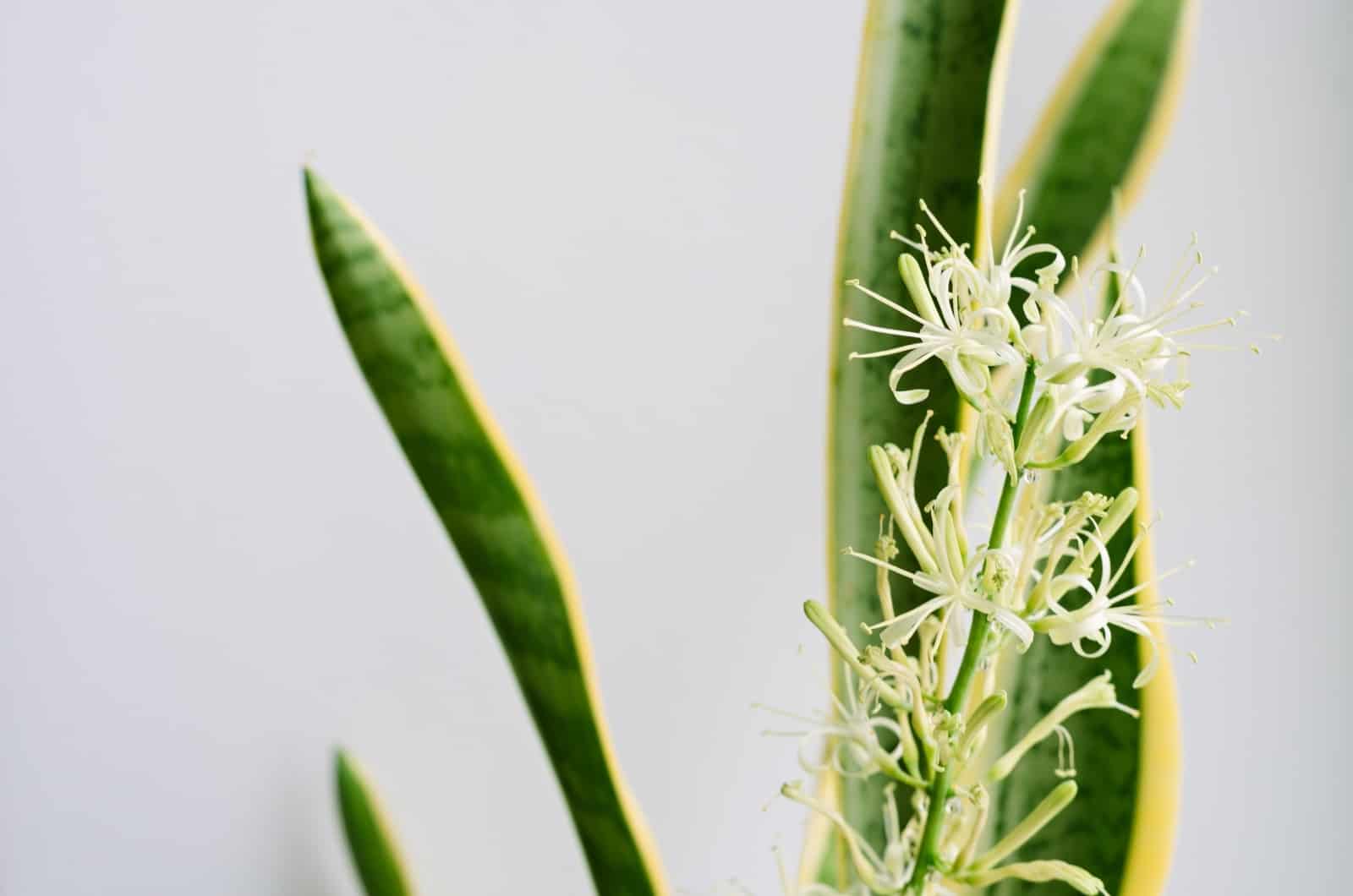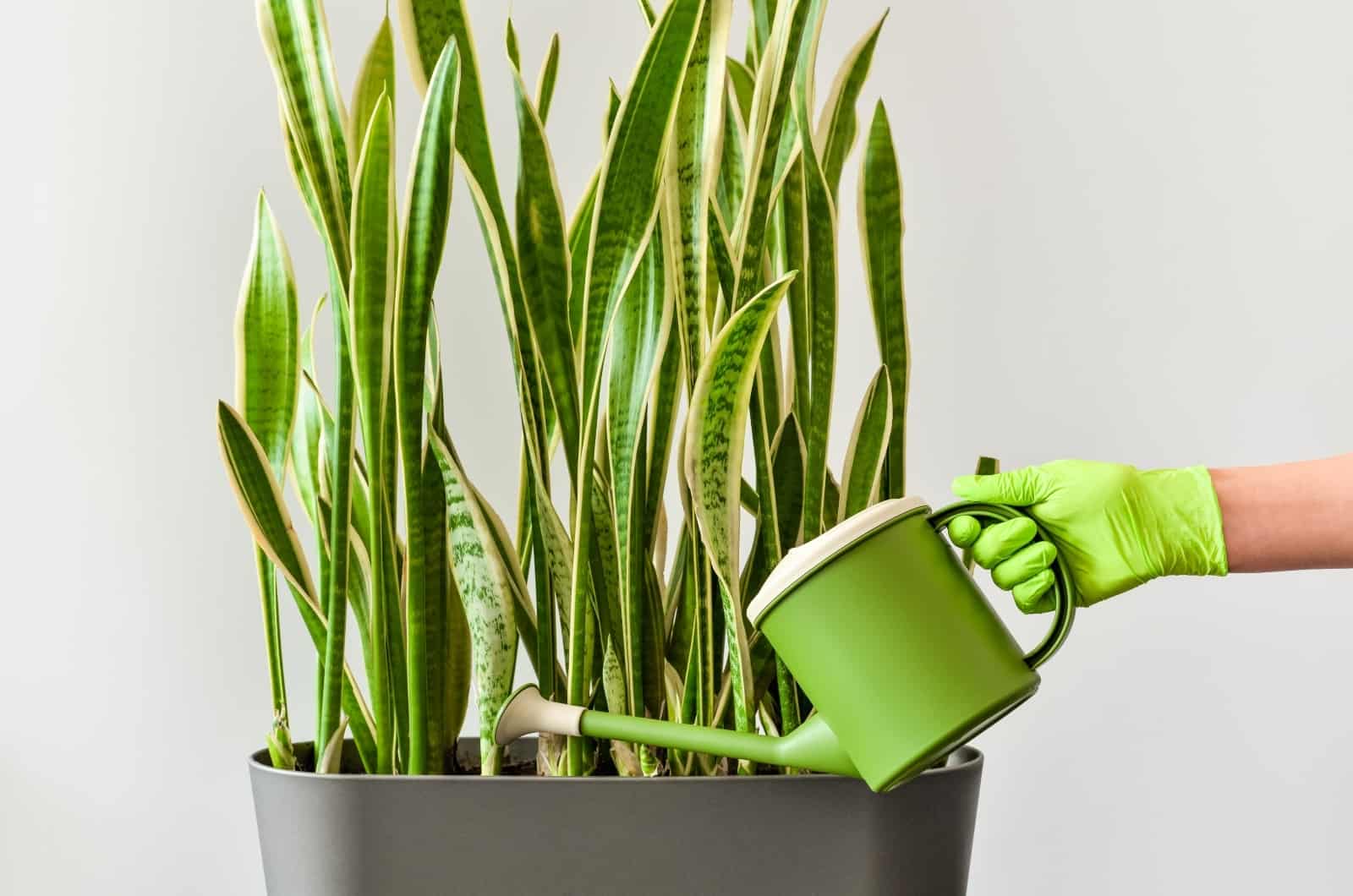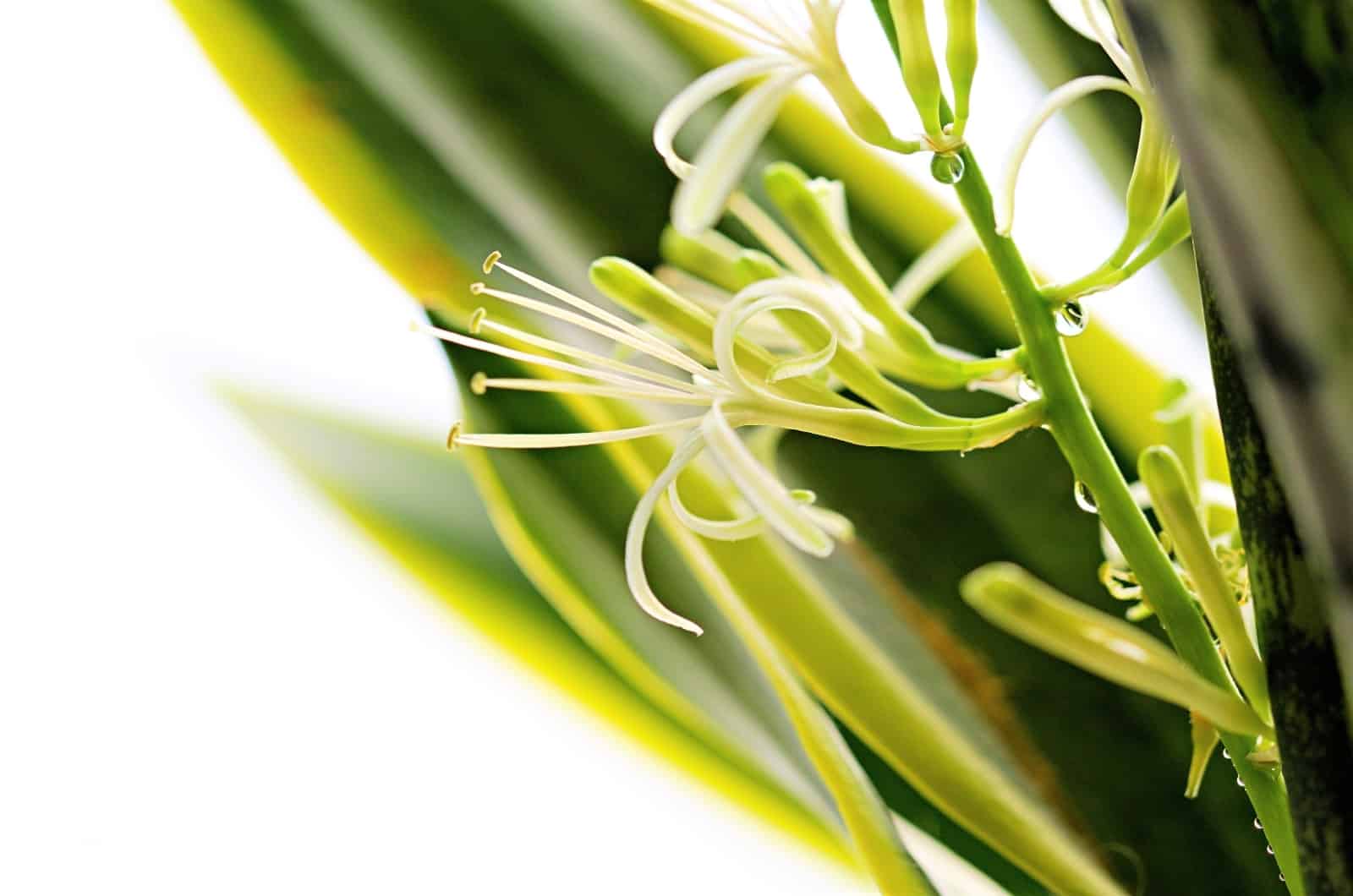The snake plant, otherwise known as the Mother-in-law’s tongue or Dracaena trifasciata, is one of the most popular houseplants in the world today. There are several reasons all gardeners and plant enthusiasts love them!
They are low-maintenance, produce beautiful, sword-like green leaves with yellow margins, and can improve the air quality indoors by releasing oxygen and absorbing toxic pollutants. However, there is something that many Snake plant owners are not familiar with – the fact it can actually produce flowers!
Although this happens rarely, in specific growing conditions, the snake plant flower might appear. These lovely white flowers make the plant even more enticing.
I have had my share of ups and downs on the journey to see my snake plant flower, and now I will gladly share all my tips and tricks that can trigger flowering. You can get your snake plant to bloom too, all you have to do is to adjust the growing conditions accordingly.
Let’s trigger some flowering!
Snake Plant Flower: Common Features
[table id=684 /]
Not many gardeners see their snake plants bloom. If you are one of the lucky ones that get to see these unique flowers, congrats! You are doing an amazing job at taking care of your Mother-in-law’s tongue plant.
If you are only hearing about the snake plant flower for the first time, let’s go through its common features together to learn more about them.
Appearance
The plant’s leaves are already breathtaking. They fit perfectly into any home, especially minimalist decor. In the majority of snake plant varieties, the first thing that grows is a narrow green stalk that can get several inches tall.
A bunch of small, lily-like flowers then grow around the stalk. These flowers have a tubular shape and their color usually varies between cream, green, and white. They look absolutely dreamy against the dark green background of the leaves!
Some snake plants can produce light-purple flowers, though this depends on the variety. There are also some species that don’t produce stalks, but flowers start growing in clusters from the base of the plant instead.
Snake flowers really add to the appearance of the plant, and you can also try braiding your snake plant to spice things up!
Fragrance
In addition to decorating your home, these flowers have a beautiful fragrance that can also make it smell incredible. They have a vanilla-like aroma that is sweet and strong. After some time, flowers produce nectar.
Sometimes this nectar can start dripping down the stalk!
The fragrance can vary between different snake plant varieties, but they generally have a sweet aroma.
Growing Habits
We already mentioned that snake plants bloom rarely, but if they do, they will produce these lovely flowers at the beginning of the growing season in spring.
They bloom once a year and the flowers can last a couple of weeks. After a while, the flowers produce small berries and deteriorate.
Older snake plants have a greater chance of blooming. This proud plant parent waited 8 years for a little snake plant flower to grow!
Meaning
There aren’t many special meanings behind the snake plant flower because they weren’t discovered that long ago. It is believed that the snake plant flower symbolizes good luck, boosts creativity, and makes rooms look more lively!
There are several health benefits that come with these plants, which is why they are associated with attracting good luck. Some even consider these plants as a type of money plant that attracts good fortune.
If you want to know more about snake plant flower meaning, check out this video:
Why Is My Snake Plant Flower Not Growing?
Snake plants not growing is something that has been discussed by gardeners before. However, the snake plant flower not growing isn’t mentioned as frequently, mainly because a lot of people don’t know that these plants can produce flowers in the first place!
It doesn’t necessarily mean that you are doing something wrong – quite the contrary, it means that your plant is in perfect condition. This is because flowering in snake plants is induced by stress.
Now, don’t get me wrong; nothing bad will happen if these plants produce flowers. However, they tend to appear if the plant is a bit neglected or root-bound. There are several factors that contribute to flowering, such as light and age.
Nonetheless, not repotting your plant is crucial for flowering. The plant has to go one year without repotting in order to produce those lovely blooms.
Another important thing is plant age. Only mature plants will produce flowers. I mean, the guy from reddit waited 8 years for his plant to bloom!
These plants are generally slow growers, although there are some tips to make them grow faster.
How To Trigger Snake Plant Flowering
Once I heard that snake plants can produce flowers, I immediately started looking for methods to induce flowering. It all comes down to the snake plant care guide. The trick to getting your plant to produce flowers lies in watering less and keeping the plant in good lighting.
We are going to discuss all this in more detail.
Let’s dive in!
Repotting
In the beginning of my research into triggering snake plant flowering, I stumbled upon repotting habits. That was around the middle of the growing season and I had already repotted my plant, so I had to wait until the next year for my plant to get root-bound.
Root-bound plants are most likely going to bloom. If you haven’t repotted your plant in a year, you can use these tips and pray that your plant produces flowers.
All of this is done to get your plant to think that it is about to die. This is a bit harsh, I know; however, it will make the plant produce flowers that contain seeds used for propagation. Your plant won’t die after flowering if you keep up with proper plant care!
Read also: How And When To Repot Snake Plant: A Complete Guide
Light Requirements
Finding an ideal location for your snake plant is relatively easy since they can tolerate different light exposure. However, finding the right location when you want to trigger flowering can be a nightmare. Trust me, I tried putting my plant in every corner of the room hoping to see some flowers!
But that’s not how it works.
If you already own a snake plant, then you are probably aware of how easy it is to take care of one. These plants can grow perfectly fine in low light conditions. However, they thrive in bright indirect light!
They don’t mind a bit of sunshine in the morning either. Although some might say that snake plants like to grow in direct sunlight, I would still recommend you keep them away from full sun exposure, especially in the summer. Too much sunlight can lead to a skinny snake plant (I wish this would apply to people as well!).
Keeping your snake plant near an east-facing window would be the best option because they can receive a bit of sunlight in the morning, and then plenty of bright indirect sunlight for the rest of the day.
Water Requirements
We already mentioned that you should water this plant less than many others; I barely water mine. These plants generally don’t like too much watering since they can store water in their leaves. Overwatering can cause serious damage to snake plant roots, making them more susceptible to rotting.
The watering schedule differs because there are a lot of factors that affect the watering needs of snake plants, such as temperature or humidity. I can’t tell you how to water your plant because each one has unique requirements.
I would suggest you let the soil dry out between waterings. I always wait until the soil dries out completely. If you keep your plant outdoors, the rain is probably enough to sustain it. You should bring it indoors once the weather gets colder. During the winter season, I honestly just ignore my plant; I let it sit in bright indirect light and water it once a month.
Soil Requirements
When it comes to soil requirements, drainage is crucial. This means that you should grow snake plants in pots with drainage holes in the bottom in addition to using well-draining soil.
Whether or not your plant will develop into a tall, robust snake plant depends on the potting soil you use. You can either use a store-bought potting soil or make your own.
Add coco coir and other similar porous materials to your soil if you want it to be porous.
Consider using sphagnum or peat moss when creating the soil for your snake plant because they will help with water retention. Potting soil, perlite, coco coir, and bark are among the best options for snake plant soil mix (3:1:1:1 ratio).
Another great mixture for Dracaena plants is one made of perlite, coconut coir, and orchid bark (1:1:2 ratio).
Temperature Requirements
Snake plants prefer growing in warm temperatures. Since me and my plants like to be warm and cozy, keeping the temperature high was not an issue! The best temperature range for their growth is between 65 to 85 degrees Fahrenheit, though snake plants can tolerate temperatures as low as 45 degrees Fahrenheit.
Keep the plant away from drafty windows and vents, and also from heat sources such as radiators or fire places. Bring your outdoor snake plant inside if the weather gets cold during the winter months.
Nutrient Requirements
These plants are not heavy feeders. However, they can benefit from a bit of fertilization during the growing season. I always add some Miracle-Gro fertilizer as soon as the summertime approaches.
You should know that fertilization will not trigger flowering, but it will boost your plant’s growth and development. Still, you can add some fertilizer with phosphorus, it won’t do any harm.
In the next growing season, I was able to see those little flower stems growing. I was so happy!
Soon after, little creamy-white flowers emerged and my entire room smelled amazing. I couldn’t believe that they smelled so nice!
After that, I continued with regular plant care. Now my plant is happy and healthy. I must mention that my plant is 6 years old. If your snake plant is a bit younger, you should probably wait a couple of seasons until you start to encourage flowering.
Wrapping Up
Even though it’s rare that you’ll see a snake plant flower, it is definitely worth the trouble to trigger your plant to produce them. These tubular flowers are beautiful and delicate, and they smell absolutely amazing!
You can save some flower seeds and try propagating more snake plants as well, but be careful not to stress it too much or you’ll end up causing damage.
That’s all, folks. I hope this article was helpful.
Until next time!

